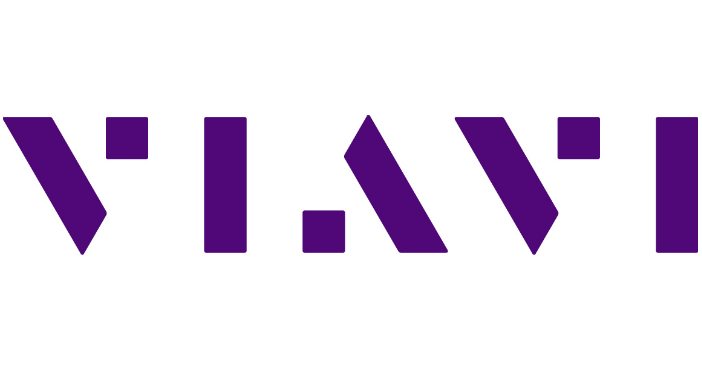Ralliant, which was spun off from Fortive in June, reported earnings numbers including net income of $48 million
Ralliant, which was officially spun off from parent company Fortive at the end of June, has reported its first quarterly earnings as a standalone, publicly traded company. The numbers included $503 million in revenues, and net earnings of $48 million.
Ralliant’s test and measurement brands include Tektronix and Fluke. For a bit of historical context, Fortive itself was formed when test and comms assets were spun off from Danaher in 2016.
“At the end of June we successfully completed our separation from Fortive, achieving an important milestone in Ralliant’s journey,” said Tami Newcombe, president and CEO of Ralliant.
Ralliant has two operating segments: Test and Measurement, and Sensors and Safety Systems, the latter of which includes industrial sensors and power-grid monitoring solutions, plus tech for aerospace and defense. The Sensors segment saw revenues of $311 million, roughly flat when compared to the same business’ performance last year when it was part of Fortive. However, Ralliant’s T&M segment saw revenues drop 15% on a year-over-year basis to $193 million, but were up 2% from the previous quarter.
Ralliant said that the drop in test revenues were mostly due to a slowdown in the automotive space in Western Europe, as well as in mainland China. But it said that it saw revenues increase sequentially in the communications test market and stabilization in the semiconductor and electronics test markets.
Ralliant, which ended the quarter with about $200 million in cash on-hand and $1.15 billion in debt, is also launching a cost-cutting program that is expected to save between $9-11 million per year and is “focused on spin-related dis-synergies within the Test & Measurement segment,” or inefficiencies as a result of bringing the brands together. Ralliant expects to save $4 million by the fourth quarter of this year.
Meanwhile, Ralliant’s board of directors approved up to $200 million in share buy-backs.
In other test news:
–Viavi Solutions also reported its results for the second quarter, with a strong performance including net revenues of $290.5 million, up more than 15% from the same time last year. Profits were $8 million, up more than 135% from the same time last year.
For Viavi’s full fiscal year 2025, its net revenues were just over $1 billion, an increase of 8.4% year-over-year, with net income of $34.8 million, up nearly 235% compared to its fiscal 2024. The results were at the high end of the company’s guidance.

President and CEO Oleg Khaykin called Viavi’s performance “a strong finish to fiscal 2025,” adding: “During the year, we saw stabilization in our base businesses, the service provider test and measurement segment and optical security pigments. Our recovery was further accelerated by the high growth in our data center ecosystem and aerospace & defense segments. We expect the positive momentum in our end markets to continue through calendar year 2025.”
Within Viavi’s operating segments, its Network and Service Enablement unit saw revenues of about $209 million, up nearly 15% year-over-year. The Optical Security and Performance Products unit is smaller but growing slightly faster, with revenues of $81.4 million and a growth rate of 16.6% from the year-ago period.
-Meanwhile, NI parent company Emerson reported results for its fiscal third quarter of 2025 that included net sales of nearly $4.6 billion during the quarter, with net earnings of $586 million.
“Emerson’s solid third quarter results reflect our sustained momentum, delivering strong underlying growth, profitability and cash flow, which we expect to continue as we finish the fiscal year,” said Emerson President and CEO Lal Karsanbhai. “We are experiencing positive momentum in key end markets, and our team’s ability to execute in this dynamic environment demonstrates the resilience of our business model and our operational excellence.”
Emerson updated its guidance numbers and said that its “tariff expense exposure has reduced,” and that it expects to see sales growth rates of about 3.5% for the full year of fiscal 2025 as a result. Karsanbhai said during the quarterly call that Emerson expects to see annualized incremental tariff impacts of about $210 million, down from a previous estimate of $455 million, and $130 million this fiscal year, down from prior estimates of $245 million.
“After our May earnings call, the tariff environment improved as announced tariffs were paused and deals were reached with a number of trade partners. Subsequently, due to the improved tariff environment and in consideration of our customers, we decided to ease a number of the surcharges we had in place,” Karsanbhai said, adding that Emerson now expects to implement pricing changes worth about $115 million for this fiscal year, to offset most of the tariff impacts.
In the third quarter, Emerson reported underlying orders growth of 4%, with test and measurement orders up 16%. Emerson said it expects to see continued recovery in T&M demand in its fiscal fourth quarter of this year. The company will hold an investor day event on November 20 in New York City.
–Huawei and stc Group have tested the world’s first 2.4T bps-per-port optical transmission on a live network, adding encryption and automation to handle Saudi Arabia’s rising data demands. Read the full story here.
–Keysight Technologies was listed for a second year among Time Magazine’s ranking of most sustainable companies in the world, improving its ranking from 247th last year to 127th in 2025 — and number 11 among companies in the electronics, hardware, and equipment sector.

